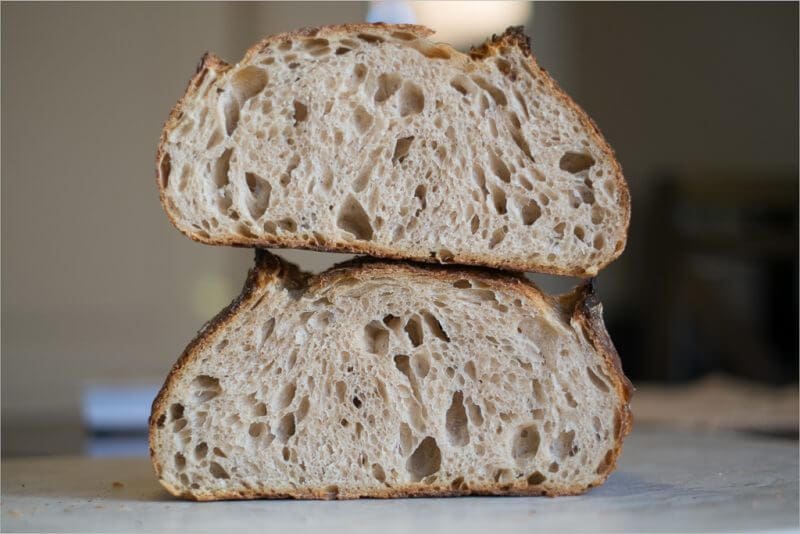As I was re-reading Tartine Bread the other week in preparation for my last post, I realized just how important managing your sourdough starter fermentation is after I stumbled on this quote:
A baker’s true skill lies in the way he or she manages fermentation. This is the soul of bread making.
Tartine Bread
I think sometimes it’s easy for me to fall into the routine of blindly feeding my sourdough starter at set times during the day and forget that it and it’s strength are the keys to good bread. Feedings shouldn’t happen on a strict schedule, they need to be adjusted based on cues obtained by sight and smell (perhaps this sounds peculiar but it is one sure-fire way to learn the habits of your starter) until the starter is predictable. Visual cues such as large air pockets and smells like ripe fruit or vinegar are indicators of good fermentation and tell you if a feeding should happen soon. In this post, I’ll go into managing your sourdough starter fermentation to increase fermentation activity.
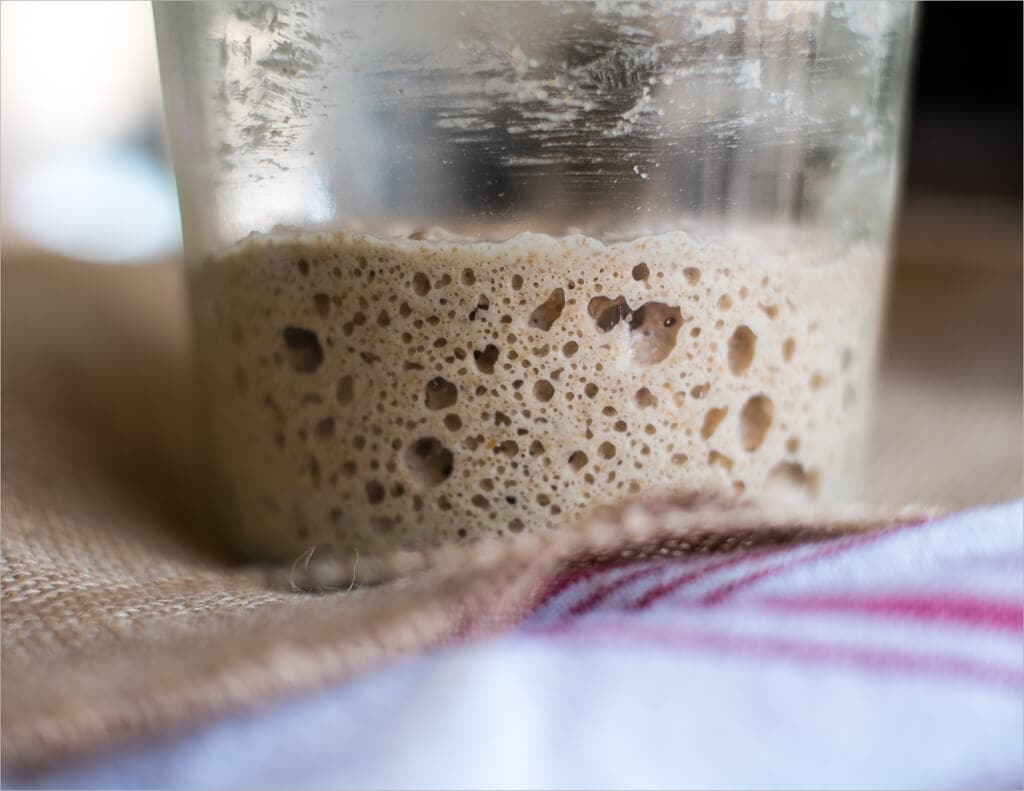
As an aside, I’ve always felt that my starter has “had a problem” and never displayed intense fermentation like I see in pictures online and images in Tartine Bread. It turns out, there are a few reasons my starter has been sluggish over the past almost 2 years, some of which I’ve only just discovered recently. I’ll go into a few of these later.
For this entry I decided to focus on my starter and to manage its fermentation until it became predictable and stable, feeding it not based on an arbitrary or convenient schedule but following its cues. Once my starter started showing signs of rising and falling consistency, I was going to use my previous bread formula and method and bake with it. Here are my results.
Flour Choices, Why Rye Flour?
One of the secrets to managing my starter is to refresh it with whole grain rye flour to keep its activity high. I’ve varied the amount of rye flour from 10% all the way up to 100% and have recently settled on 50% whole grain rye mixed with 50% unbleached all-purpose.
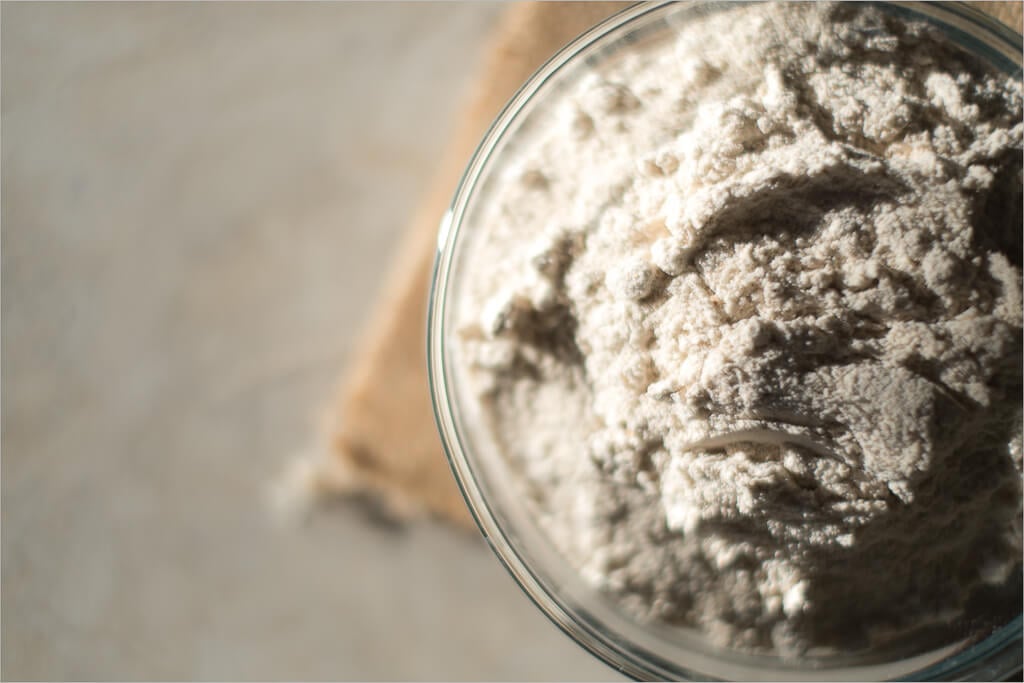
Whole wheat and rye flours provide more nutrients for your starter and ferment more actively, but working with rye flour makes starter maintenance easier than whole wheat. Rye provides increased fiber and nutrients similar to whole wheat flour, but because of its lower gluten amount it’s much easier to stir. I’ve noticed when I work with whole wheat if my feedings aren’t timed just right I will end up with a smelly soupy mess. Conversely, if I feed it too soon it will not build the required strength. Rye helps to alleviate some of these issues as it’s a bit more forgiving with its feeding times.
Managing Sourdough Starter Fermentation
The entire 2 weeks leading up to this bake I carefully fed my starter 3 times a day with 50% rye and 50% unbleached all-purpose. At the beginning of these two weeks, activity was slow and I could only manage 2 times a day (once in the morning and once before bed). After about half a week or so I was able to step it up to 3 times a day (morning, mid-afternoon, before bed). By the end of the first week, my starter began to expect these feedings and I noticed it started to strengthen. Again, I followed the cues. When I noticed it began to fall in mid-afternoon after consuming the sugars in the flour all morning and started to smell sour, I would feed it. It turns out my feeding times were 8:00 am, 4:00 pm, and 10:00 pm.
One important thing I noticed with these 3 times a day feedings: my starter no longer smelled like vinegar by the time its next feeding came around. I reduced the amount of acidity carried over at each feeding by frequently discarding 80% of my starter, removing that intense vinegar smell, and in the end, reduced the sourness of my bread enough that it only barely peeked through.
With a Strong Starter, Time to Bake My Tartine Sourdough
I followed the baking method listed in my previous post while only changing a few of the percentages in order to match Tartine Bread’s sourdough recipe more closely. The main difference is I prefer to use a 100% whole wheat leaven to spur even more fermentation.
Leaven:
- 55g ripe starter
- 200g whole wheat flour
- 200g water
Ingredients for bake:
- 250g (25%) leaven
- 900g (90%) King Arthur white bread flour
- 100g (10%) Great River whole wheat bread flour
- 20g (2%) salt
- 750g water (75%)
Thanks to my strong starter, by the end of the bulk fermentation step I noticed the dough was very aerated with lots of little air bubbles and correctly pulling from the sides of the container. The dough was definitely ready for shaping. I performed my usual shaping, one smaller chunk of dough as a boule and the other larger chunk as a batard. After shaping when the boule and batard were placed into their bannetons, they were jiggly and full of air. I knew I was on the right track with these two.
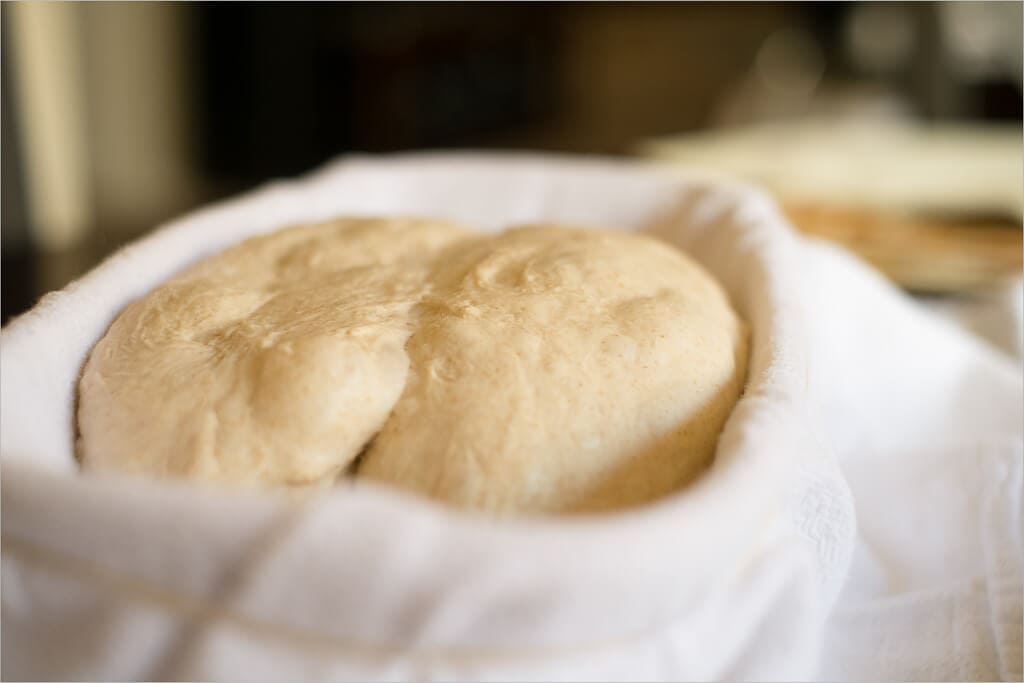
When I pulled out the bannetons from the fridge in the morning I could see the proof was moving along nicely. A quick “finger dent” test showed they were fully proofed and ready for baking.
Conclusion
I think it’s safe to say, and you can just see in the pictures, this was hands down the best pair of sourdough loaves I’ve baked. There is just something so rewarding when these come out of your oven after spending more than a day coaxing them into existence. It turns out, managing your sourdough starter fermentation activity helps ensure is strong and lively when making your levain, which ultimately transfers to your end loaf of bread.
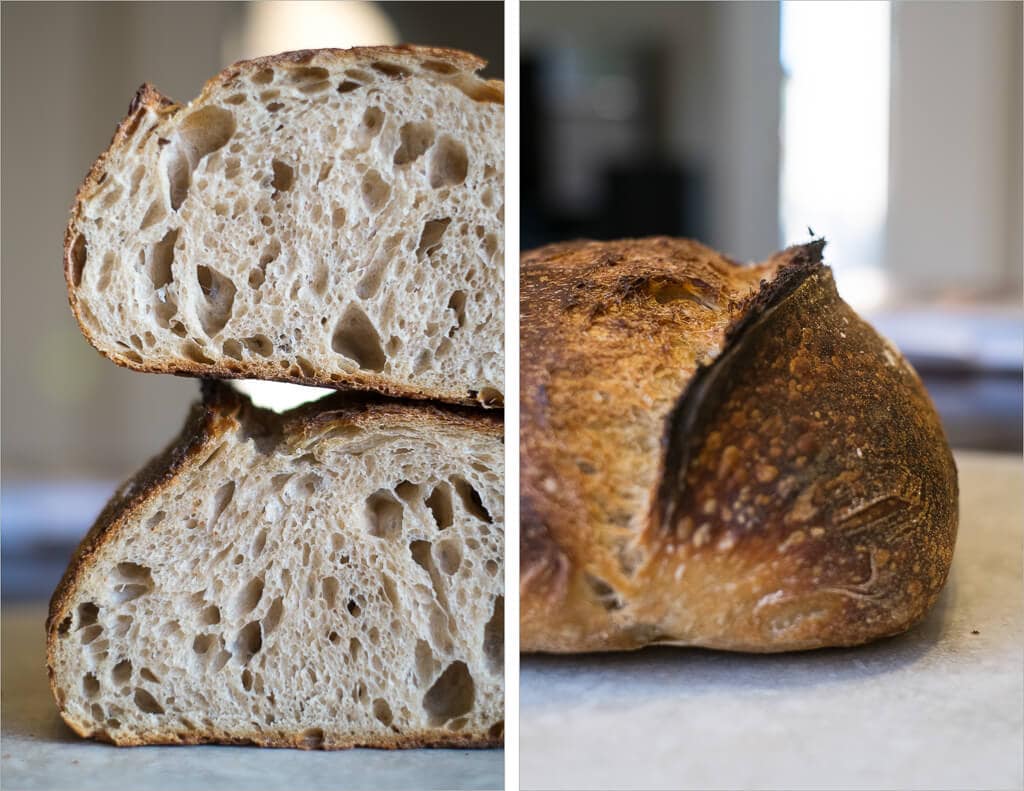
Crust
Shattered to the touch, brittle and flaky, this was the crust I have been after. The crust has beautifully dark colores where I scored in, and a lighter color in the fissure. With some more practice on shaping, I can improve here to create some more stretching and higher ears, but the blistery skin and thin crispy crust were very welcome.
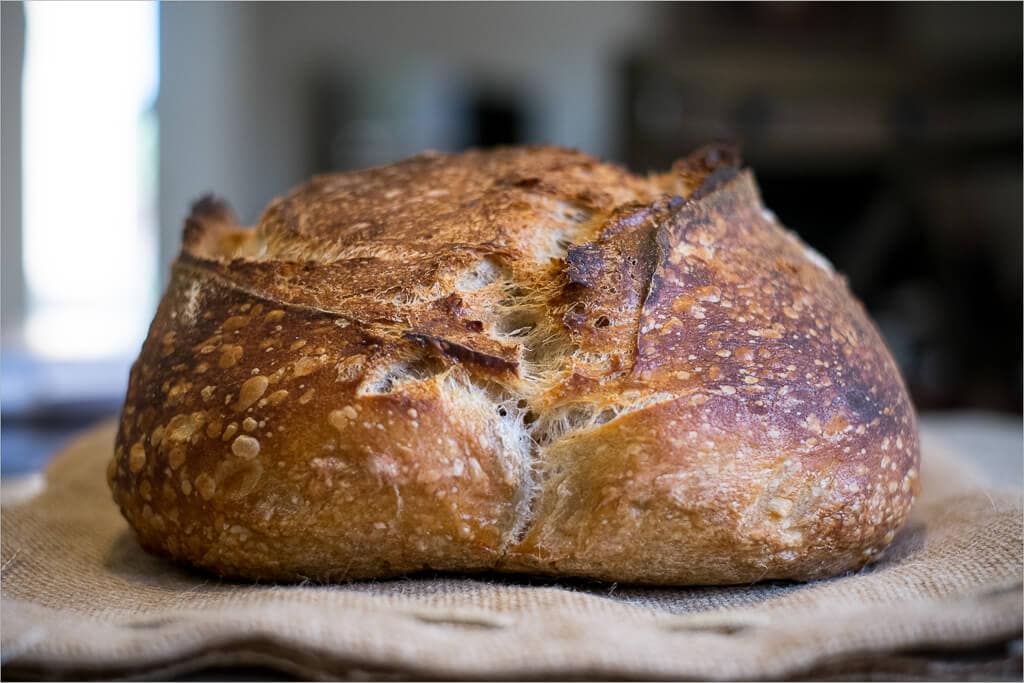
Crumb
Beautiful and soft, the crumb was so light I was shocked when first biting into it. You can literally see the oven spring movement from the bottom of the loaf to where the score was done down the middle. The soft and perfectly cooked crumb came the closest thus far to my ideal loaf.
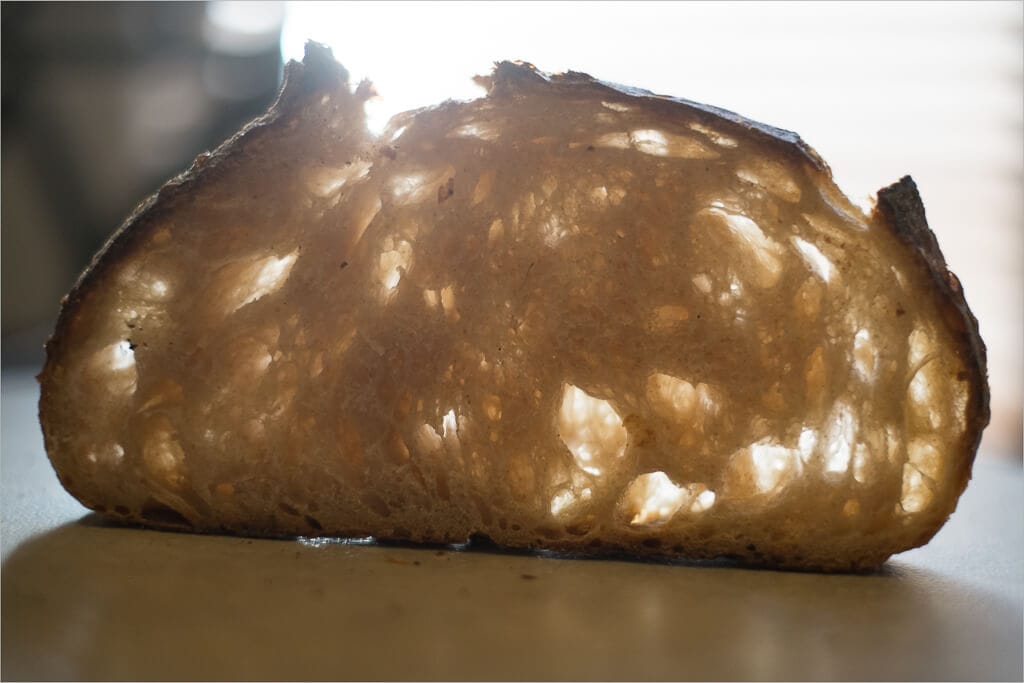
Taste
Light and soft with only the smallest hint of sour. This is the sourdough I love. Slicing up the bread to make a grilled chicken, pesto, swiss, and tomato sandwich for lunch was a real treat indeed. Later that evening I enjoyed a thick pan-grilled slice with chopped avocados, cherry tomatoes, and a dab of extra virgin olive oil.
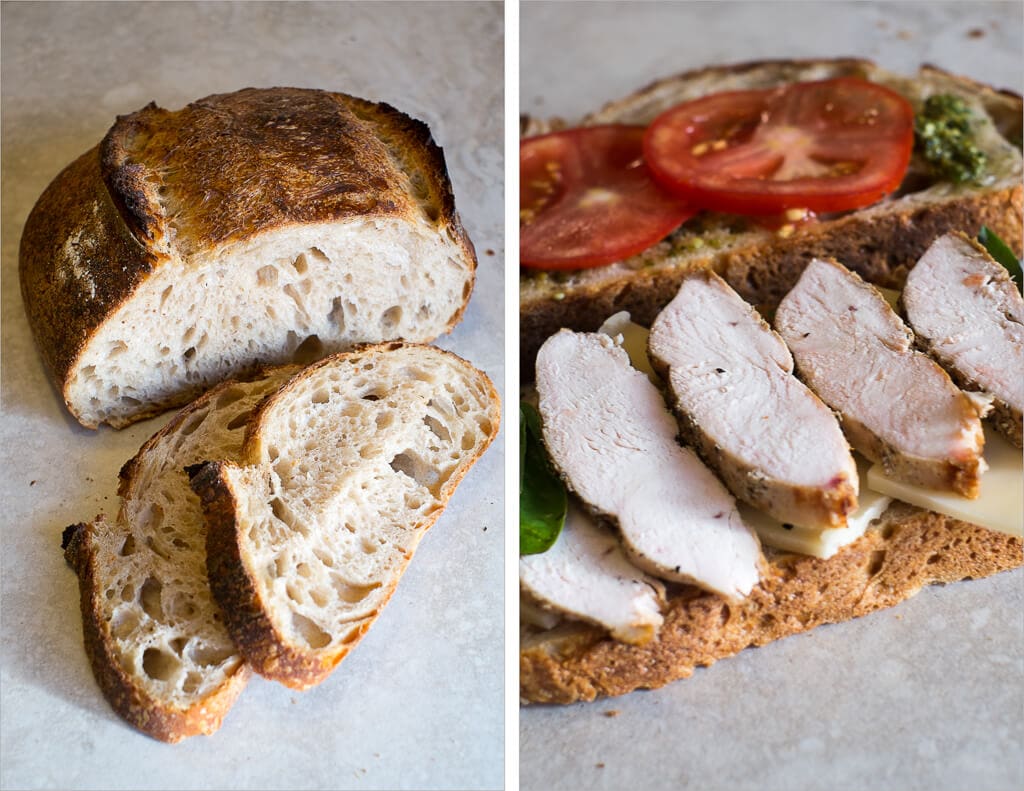
Buon appetito!
If you use this recipe, tag @maurizio on Instagram so I can take a look!


